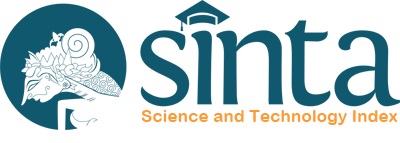New Approach on Planning for Water Provision using Water Balance (Case Study: Sewakaderma Municipal Waterworks, Denpasar)
DOI:
https://doi.org/10.35814/asiimetrik.v6i2.6553Keywords:
water provision, simulation, non-revenue waterAbstract
The rapid growth of urban populations has led to an increase in water demand. Moreover, Public Water Supply Companies need to deal with water loss. This issue is primarily caused by aging water networks and poor infrastructure due to a lack of maintenance, which makes the piping system susceptible to damage and leakage. In Denpasar City, the pipeline network, which spans over 94,753 meters, is more than 40 years old. Given the current circumstances, in 2023 the amount of unaccounted water loss due to leakage reach 38%. This high percentage of Non-Revenue Water (NRW) has several negative consequences, including a decrease in the quality of distributed water, a reduction in PDAM profits, and limitations on the city government's ability to expand and achieve 100% coverage. The objective of this study is to estimate the potential demand and supply of PDAM Denpasar City. Using Quantitative and qualitative approach, with minimum water demand of 129.46 liters per person per day (lpd). The Water Supply Simulation of Denpasar City reveals that to achieve optimal conditions, PDAM Denpasar City must reduce NRW from 38% to 19.5% by 2044. This can be accomplished through various measures, including the replacement of the Primary Distribution Network along 116.95 kilometers, replacement of 51.03 kilometers Secondary Distribution Network, the installation of 78 District Metered Areas (DMAs), and an increase in the number of customers by at least 20,750 households (representing a 22% increase from 2023).
Downloads
References
Adhyatma (1992) ‘Peraturan Menteri Kesehatan Republik Indonesia Nomor: 986/MENKES/PER/XI/1992 Tentang Persyaratan Kesehatan Lingkungan Rumah Sakit’. Kementerian Kesehatan Republik Indonesia.
Al-Bulushi, M.M., Sulti, M.M.A. and Abushammala, M.F.M. (2018) ‘Investigation of Water Losses in Water Supply System: Muscat as a Case Study’, MATEC Web of Conferences, 203, p. 07004.
Bouquet, C. (2005) ‘Methodology for the Quantitative Research’, in C. Bouquet (ed.) Building Global Mindsets: An Attention-Based Perspective. London: Palgrave Macmillan UK, pp. 63–74.
BPKP (2021) Laporan Evaluasi Kinerja PDAM Tirta Sewakaderma. Bali: 2. Badan Pengawasan Keuangan dan Pembangunan Perwakilan Provinsi Bali. [Print].
Butler, D. and Memon, F. (2006) Water Demand Management. 5th edn. London, UK: IWA Publishing. [Print].
DFSA (2021) Performance Audit Report 2016-2021. Denpasar, Indonesia: Development and Finance Supervisory Agency. [Print].
Farley, M. et al. (2008) The Managers Non Revenue Water Handbook: A Guide To Understanding Water Losses. USA: USAID. [Print].
Farley, M. and Liemberger, R. (2005) ‘Developing A Non-Revenue Water Reduction Strategy: planning and implementing the strategy’, Water Supply, 5(1), pp. 41–50.
Farouk, A.M., Rahman, R.A. and Romali, N.S. (2023) ‘Economic Analysis Of Rehabilitation Approaches For Water Distribution Networks: Comparative Study Between Egypt And Malaysia’, Journal of Engineering, Design and Technology, 21(1), pp. 130–149.
Frauendorfer, R. (2010) The Issues and Challenges of Reducing Non-Revenue Water. Metro Manila, Philippines: Asian Development Bank. Available at: https://www.adb.org/publications/issues-and-challenges-reducing-non-revenue-water (Accessed: 15 July 2023).
Hunaidi, O. and Wang, A. (2006) ‘A New System For Locating Leaks In Urban Water Distribution Pipes’, Management of Environmental Quality: An International Journal, 17(4), pp. 450–466.
Kanakoudis, V. and Tsitsifli, S. (2014) ‘Using The Bimonthly Water Balance Of A Non-Fully Monitored Water Distribution Network With Seasonal Water Demand Peaks To Define Its Actual NRW Level: The Case Of Kos Town, Greece’, Urban Water Journal, 11(5), pp. 348–360.
Lakshman, M. et al. (2000) ‘Quantitative Vs Qualitative Research Methods’, The Indian Journal of Pediatrics, 67(5), pp. 369–377.
Makara, L. (2009) ‘Successful Outcomes from Water Loss Reduction Eda Ranu, Papua New Guinea’, in Proceedings of the 5th IWA Water Loss Reduction Specialist Conference. 5th IWA Water Loss Reduction Specialist Conference, London, UK: International Water Association, pp. 73–84.
PDAM (2022) Outline Business Case PDAM Sewakaderma. Denpasar, Indonesia: PDAM Sewakaderma. [Print].
Rengganis, S.I. (2022) ‘Reducing Water Loss Based On Water Balance Method (By Using Step Test - Sounding Technique) And Financial Analysis (Case Study: Graha Indah Residence, PDAM Tirta Manggar In Balikpapan City)’, Jurnal Teknik Lingkungan, 28(1), pp. 11–23.
Revollo-Fernández, D.A., Rodríguez-Tapia, L. and Morales-Novelo, J.A. (2020) ‘Economic Value Of Water In The Manufacturing Industry Located In The Valley Of Mexico Basin, Mexico’, Water Resources and Economics, 30, p. 100138.
Romdloni, A. (2022) ‘Penerapan Manajemen Aset dan Internet of Things (IoT) dalam Pengendalian Kehilangan Air Minum (Studi Kasus PDAM Kota Malang)’, Jurnal Pendidikan dan Konseling (JPDK), 4(5), pp. 2295–2307.
Ryan, A.B. (2006) ‘Methodology: Collecting Data’, in M. Antonesa et al. (eds) Researching and Writing your thesis: a guide for postgraduate students. MACE: Maynooth Adult and Community Education, pp. 70–89. Available at: https://mural.maynoothuniversity.ie/872/ (Accessed: 15 July 2024).
Singh, K. and Mahanta, S. (2021) ‘Sustainable Urban Water Management Strategies’, in G. Chadha and A.B. Pandya (eds) Water Governance and Management in India: Issues and Perspectives, Volume 2. Singapore: Springer, pp. 23–43.
Smith, M. and Al-Maskati, H. (2007) ‘The Effect Of Tariff On Water Demand Management: Implications For Bahrain’, Water Supply, 7(4), pp. 119–126.
Suárez-Fernández, S., García-Valiñas, M.A. and Martínez-Espiñeira, R. (2022) ‘Exploring Behavioral Responses To A Residential Water Tariff Reform’, Water Resources and Economics, 40, p. 100211.
Tsur, Y. (2005) ‘Economic Aspects of Irrigation Water Pricing’, Canadian Water Resources Journal, 30(1), pp. 31–46.
WHO (2022) Guidelines for drinking-water quality: fourth edition incorporating the first and second addenda. 4th edn. Switzerland: World Health Organization. Available at: https://www.who.int/publications/i/item/9789240045064 (Accessed: 10 June 2024).
Wu, W. and Little, T. (2024) ‘Quantitative Research Methods’, in Encyclopedia of Adolescence. United States: Academic Press, pp. 287–297.
Yekti, M.I., Norken, I.N. and Wentiari, N.P.R. (2019) ‘Non-Revenue Water (NRW) And Its Handling For A Drinking Water Supply System In Kedewatan Zone Gianyar Bali’, MATEC Web of Conferences, 276, p. 04004.





























